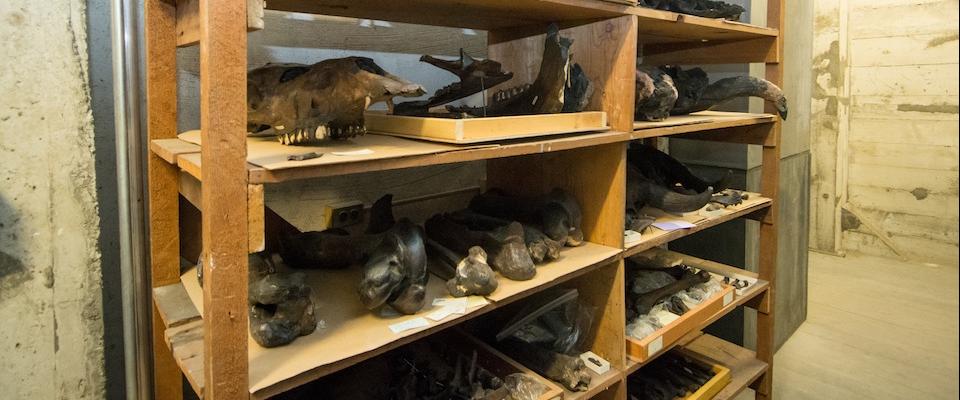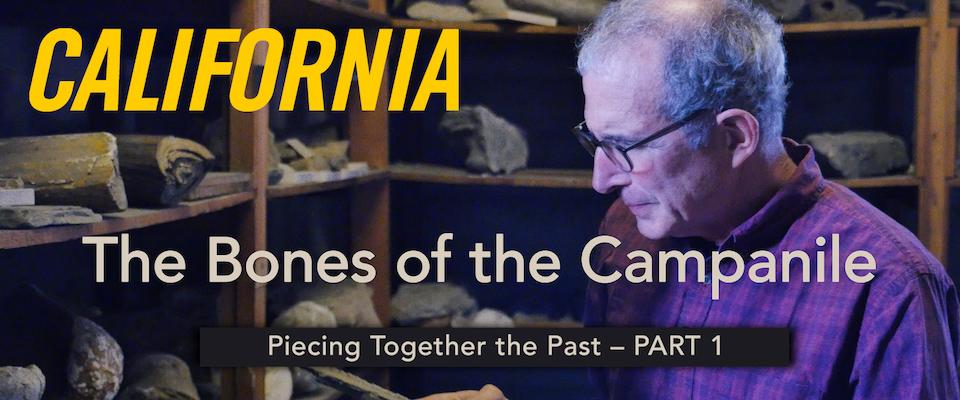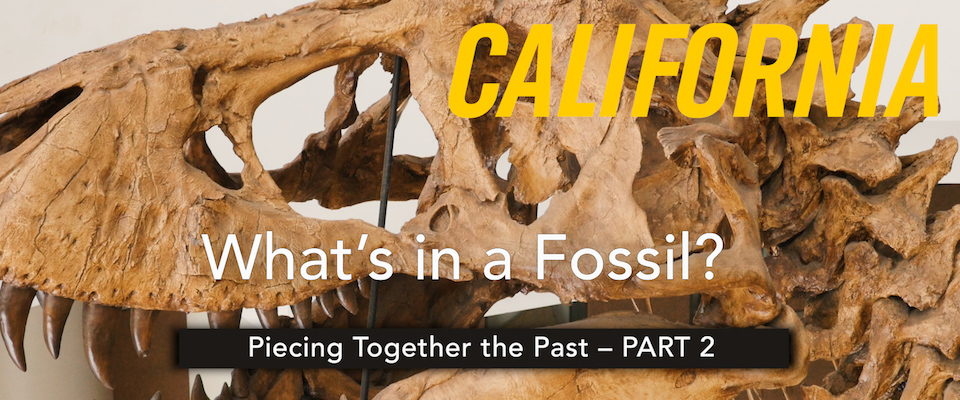Legend has long engulfed UC Berkeley’s iconic Jane K. Sather Tower—the Cal Campanile , which was completed 100 years ago and is celebrating its centennial this academic year. Perhaps you’ve heard that it contains prehistoric fossils?
Unlike some other mysterious tales floating around about the Campanile, this one is actually true. Within the tower’s confines lie thousands and thousands of fossils, including those of mammoths, saber-tooth cats, horses, wolves, camels, ground sloths and birds. All are stored in varying states of preservation on the first five floors.

“Some are sitting in open wooden shelving, others are in cardboard file boxes, and the rest are in old storage cases,” says Bob Dundas, department chair and associate professor of vertebrate paleontology at Cal State Fresno, who led a major curatorial project on the fossils when he was a Ph.D. student at Cal in the early ’90s. “The ones that aren’t in cases are covered with a layer of dust literally a quarter of an inch thick.”
The fossils came to Cal in two huge hauls. The first arrived in the first decade of the 20th century, when the university acquired more than 23,000 fossils, weighing 20 tons, from an excavation at the La Brea Tar Pits in Los Angeles.
“Of course, we don’t call it a tar pit anymore; we call it a tar seep,” Dundas says. “Everybody envisions a bubbling pit of tar, but that’s not the case at all. What really happened is that petroleum seeped up through this porous sediment, making its way to the surface, and then rainfall runoff would cover the surface of the tar. Animals would go there to drink and get caught in the sediment. You had critters wandering around the landscape for tens of thousands of years and getting stuck in the tar. They’re still getting stuck today—mostly insects, squirrels and birds.”
Initially the fossils were stored in the basement of California Hall. But that was too far from Bacon Hall, home of the Paleontology Department, so they were moved to the Campanile in 1914.
Ten years later the second big haul, 15,000 fossils, arrived from the McKittrick Tar Pits—oops, tar seep—in the Central Valley after the Paleontology Department excavated the site.
From a security standpoint, the Campanile was hardly an ideal storage container.
“When I first came here in 1988, the elevator operator had access to all floors of the Campanile,” says Dundas. “They would stop at the floor, the doors would open, and the operator would say, ‘And here we have fossils from the La Brea Tar Pits.’ They’d allow people to walk out onto the floor, and we know specimens disappeared. Plus, if you walked up and down the stairwells, the doors weren’t locked, so you had access to all floors that way, too.
“Today, the elevator operator lacks access to those floors, and the doors on the stairwell are locked. We really have no idea what could have walked out in somebody’s pocket, but it’s clear some material was taken. How many specimens disappeared by the public taking them? How many were traded to other museums? How many were taken by newly-minted Ph.D.s when they left for their new jobs? We don’t know, and there are no records.”
The remaining fossils sat in the Campanile, unused and unstudied, for decades, until new technology came along to reveal their secrets.
“Most of the original work focused on identifying what species the animals were,” says Dundas. “But by the 1940s, much of the work that could be done on them had been done. It took the development of new technology such as accelerated mass spectrometry, which allows researchers to pinpoint a fossil’s date to within 50 or 100 years, and stable isotope analysis, which can tell you things like what they ate. We can figure out if a carnivore was eating a specific kind of herbivore, and that’s really neat because you can’t ask the animal, ‘What did you have for dinner?’ “
Today, the fossils are in constant use by scholars and teachers both on campus and beyond, including UC Berkeley integrative biology professor Leslea Hlusko, whose team of undergraduates, supervised by Ph.D. candidate Oliver Rizk, studied hundreds of fossils of the dire wolf—a large, extinct species unrelated to the present-day gray wolf.
“We paired the students into three groups: two pre-dental students who measured the teeth, two who were interested in long bones like femurs, and two who were interested in cranial variation,” Hlusko says. “Now we’re comparing our findings to living organisms. If their genetic development is similar, that tells us a lot. And if it’s different, that tells us a lot, too.”

“It was definitely gross,” says Rizk, who got his Ph.D. in 2012 and now teaches biology at the University of Southern California. “The Campanile is not the ideal location to store this kind of material. There had been enough moisture in there so that the bones and skulls had a fine layer of green fuzz on them. And unless you know what species of fungus you’re dealing with, you risk damaging the bones. So we carefully washed them with toothbrushes and water and put them in the courtyard of the Valley Life Sciences Building to dry in the sun. It was not only for research purposes; we also acted as curators to preserve them for the next generation.”
Professors such as Hlusko often say that one of the rewards of being at Berkeley is working with undergraduates eager to be apprentices in the scientific process, allowing them to blur the line between teaching and research. “And what makes the Campanile fossils such a beautiful collection is that there are so many of them,” she says, “so we can get at the biology so much easier.”




















